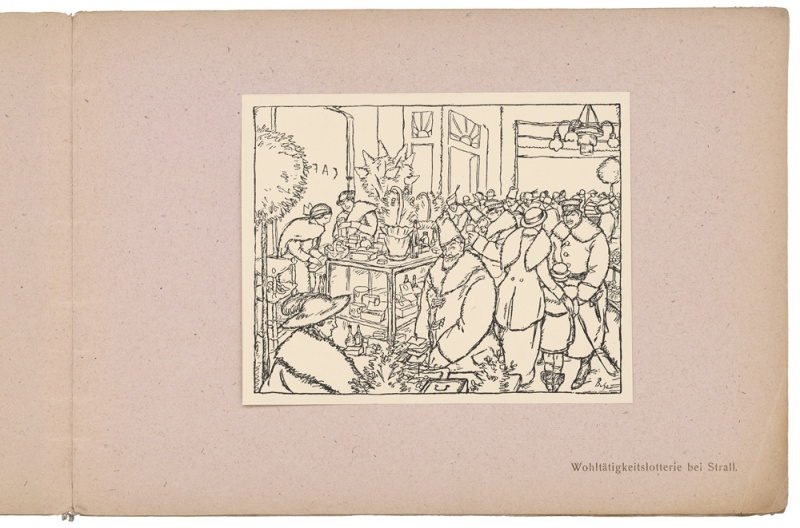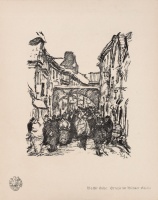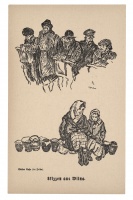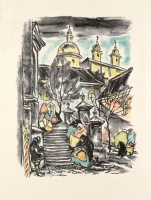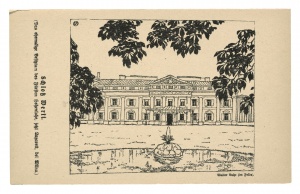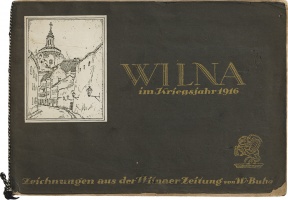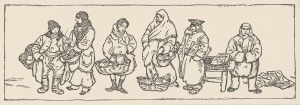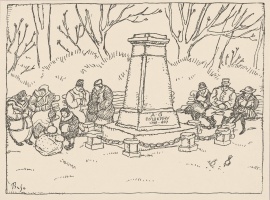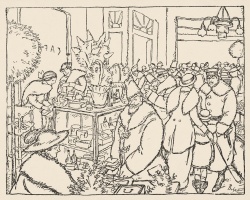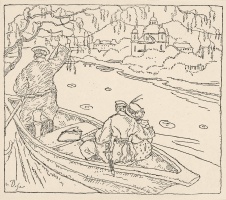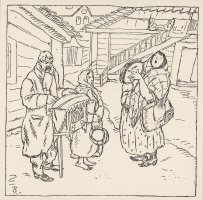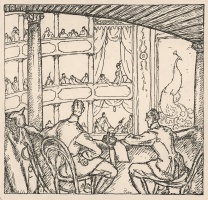
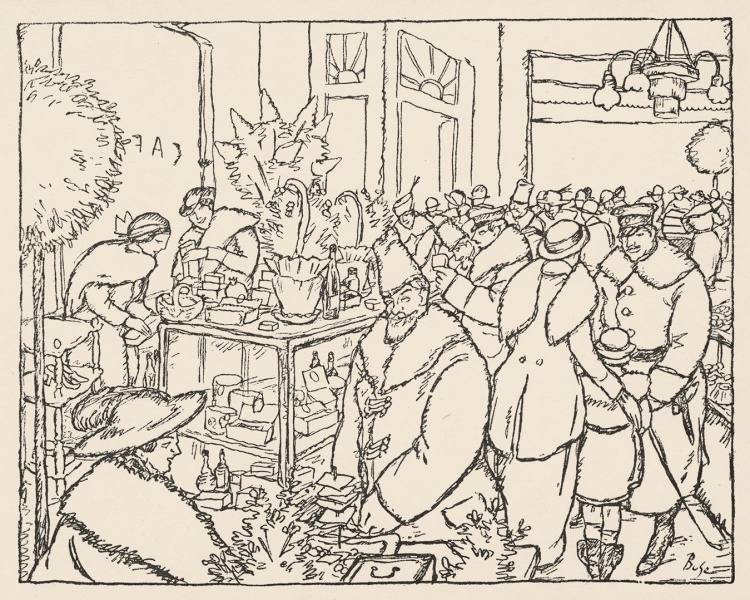


The charity raffle in Sztrall’s Coffee House
| Author: |
Walter Buhe (1882–1958) |
| Created: | 1916 |
| Material: | paper |
| Technique: | |
| Dimensions: | 14.40 × 18.10 cm |
| Signature: | on the zincograph, bottom right: Buhe |
‘Vilnius in the Year of War 1916’.
The war left residents of Vilnius very badly impoverished: the Germans imposed punitive requisitions on food, raw materials and fuel. The retreating Russian army took away factory equipment, and productivity declined, thereby causing severe unemployment. Vilnius was swamped with refugees, and the streets filled with beggars, orphans and the needy. The German administration allowed local people to set up organisations to support those who were suffering in the war. The various ethnic groups ran charitable organisations. This drawing by Buhe portrays a scene in the famous Sztrall’s Coffee House in Vilnius, where the Committee of Polish Women is holding a raffle in aid of the poor. Wealthy citizens jostle with each other in the coffee house: people are shown wearing fur coats, the ladies are wearing fashio nable hats, and the tables are laden with items to be raffled. Such prosperity creates a propagandist and false picture of life during the war.
Text author Laima Laučkaitė
During the First World War, Walter Buhe (1882–1958) worked as an artist for the German-language newspaper Wilnaer Zeitung (Vilnius Newspaper). The newspaper and its illustrated supplement published his drawings of places in Vilnius regularly, which he later published in the book Wilna im Kriegsjahr 1916 (Vilnius in the Year of War 1916). The objects in the drawings play an important role, as they show the lives of different sections of the population. A charity raffle in Sztrall’s Coffee House would have us believe that besides the desperate and souldestroying poverty, there was a staid and comfortable life too. This zincograph portrays well-dressed people in a coffee house, standing around piles of sweets and baskets of flowers. The cash-desk is in the foreground. The winter clothes and warm atmosphere suggest that it is the pre-Christmas period. However, according to the art critic Laima Laučkaitė, the scene by Buhe of a charity raffle in Sztrall’s coffee house is not realistic: the abundance he depicted does not conform to the stories told by most witnesses about the constant shortages that plagued the city (Vilnius. Topophilia, vol. 2, compiled by L. Laučkaitė, Vilnius: Valiunas Ellex, 2015, p. 126).
Text author Giedrė Jankevičiūtė
Source: Law firm Valiunas Ellex art album VILNIUS. TOPOPHILIA II (2015). Compiler and author Laima Laučkaitė, OBJECTS ON SHOW (2017). Compiler and author Giedrė Jankevičiūtė





